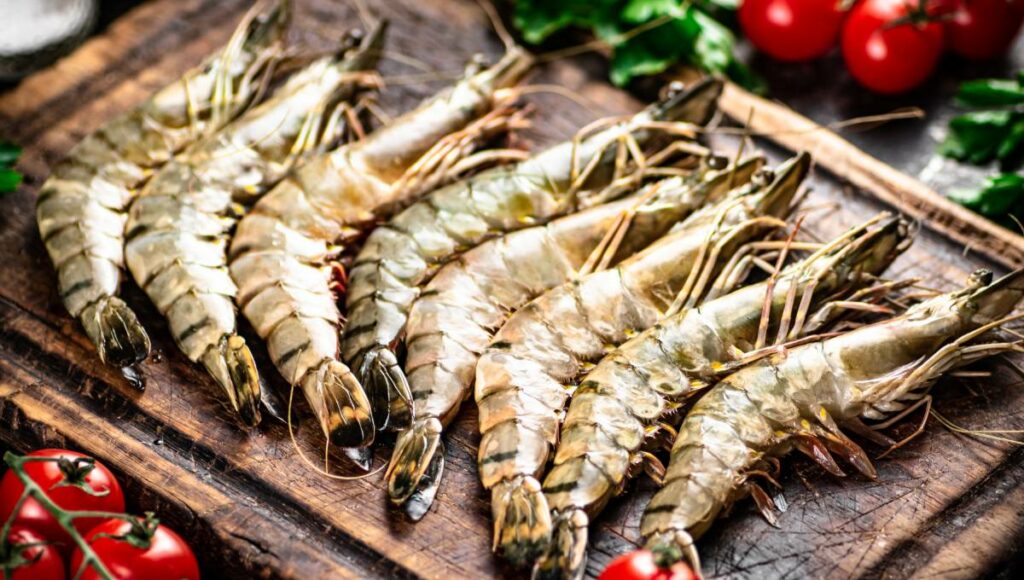Share the post "Why Do Shrimp Shrink When Cooked? (and how to prevent it)"
Shrimps are a common seafood dish. They are high in protein and have several health benefits which add to their popularity. Their delicious taste and health benefits are surely an eye-catcher but oftentimes, people question the change in color and size of the shrimp while cooking. So, why is it that shrimps shrink while cooking?
Shrimp shrinks in size because of over-cooking. Shrimp tightly curl up in a ball-like shape and loses their soft texture because of over-cooking. Shrimps take about 2-3 minutes on each side to cook perfectly. Therefore, you should stay nearby the stove to quickly take it off the heat.
Just like meat, shrimp also shrinks in size when you cook it. But unlike meat, the flesh of shrimp has a high number of protein cells. So when it’s overcooked, these protein cells bind less water and curl up in a ball, causing the shrimp to shrink.
Shrimp can be prevented to shrink in size if you cut it in the right place before cooking. A few small slits on the undersides of a shrimp can save you from all this trouble. Let’s have an in-depth dive into the factors that lead to shrimp shrinking.

The reason behind shrimps shrinking:
Shrimps are unlike beef or any other meat. Their flesh has a high concentration of proteins rather than fats. These proteins shrink when you cook the shrimp and it reaches a certain temperature. At high temperatures, these protein cells begin to tighten up and excrete water, which causes the shrimp to shrink.
How to prevent shrimp from shrinking?
There are multiple methods of how we can cook shrimp without it shrinking. Let’s explore some of these foolproof methods so we can cook our shrimp to perfection!
Making small cuts on the underside:
One way to prevent your shrimp from shrinking is by making small cuts with a knife on the undersides of the shrimp. Once you have peeled off the shell and deveined the shrimp, flip it over so that the belly or underside is facing upwards, and make small shallow cuts using a sharp knife.
These cuts will disconnect the underside tissues which causes the shrimp to shrink. And will help you cook your shrimp to perfection without it shrinking!
Boiling shrimp:
Boiling shrimp is another way to go about it. Even with boiling, it only takes shrimp 2-3 minutes to be cooked perfectly. While a slight curl in the shape of the shrimp is fine, if it tightly wraps up and shrinks so that the tail meets the head, then you know that your shrimp is overcooked.
So to prevent your shrimp from shrinking, you must put them in ice or run them through cold water immediately after taking them off the stove. This helps to stop the cooking process and your shrimp doesn’t shrink!
Learn More: 15 Easy Japanese Shrimp Recipes
Inserting Wooden Skewers to prevent shrinking:
While grilling shrimp, it is best to insert wooden skewers or toothpicks to prevent them from shrinking. As we have established before that shrimps are quickly cooked under 2-3 minutes and any more time on the stove will lead to it shrinking and losing its juicy, tender texture.
This is why inserting a wooden skewer into shrimps will help you flip the entire batch altogether and you can best monitor the time it needs to cook perfectly. This method will save you from overcooking your shrimp which leads to its shrinkage.
Butterflying the shrimps:
Butterflying the shrimp means taking out its intestinal tract and cutting it at the center from head to tail using a paring knife and patience.
This technique makes it less likely for your shrimp to overcook and shrink. Once you make the incision, it should be deep enough that the two halves are connected by a tiny membrane. Just like a butterfly!
Final thoughts:
I hope this answers all the questions you had regarding why your shrimp was shrinking. And I hope that in these methods you find the one that best suits your needs. Happy Cooking!

